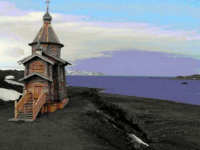|
|
Autore: Floyd Larck, KK3Q
Bellingshausen Base and its church
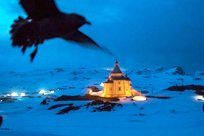 Interesting article pubblished on the New York Times by Ernesto Molina, a Chilean scientist, walking above the Russian Orthodox Church of the Holy Trinity, overlooking the Russian Antarctic base.
Interesting article pubblished on the New York Times by Ernesto Molina, a Chilean scientist, walking above the Russian Orthodox Church of the Holy Trinity, overlooking the Russian Antarctic base.
On a glacier-filled island with fjords and elephant seals, Russia has built Antarctica’s first Orthodox church on a hill overlooking its research base, transporting the logs all the way from Siberia.
Read more at: http://www.nytimes.com/interactive/2015/12/29/world/countries-rush-for-upper-hand-antarctica.html?_r=0
The Seven Churches of Antarctica
Thanks to MessyNessy for posting this very interesting review of the Churches in Antarctica .
.
Nice pictures and great reportage!
Antarctica is officially considered a desert, thus making it the largest desert in the world. But even in this icy barren landscape, the explorers and scientists braving the harshest of climates have still found time for religion. With at least seven churches used for religious practice in Antarctica, these are the Southernmost places of worship in the world…
Click on the Church aside and enjoy reading
Priests ‘not needed’ on Antarctic missions (?)
|
|
|
Drawn from personal experiences in Antarctica…
 Lieutenant Colonel Franco Colombo, tell us about his four past seasons in Antarctica in the wake of the Italian Expedition campaigns.
Lieutenant Colonel Franco Colombo, tell us about his four past seasons in Antarctica in the wake of the Italian Expedition campaigns.
Franco said: At some stage in my four assignments, I have always noticed the lack of a place of worship, and I have constantly tried someway to overcome it. The attached picture shows how, the devotion of our Team at MZS to the small “Madonnina” is real and heartfelt and on the day of the Immaculate Conception (8th December) a small procession is set till the place where the Virgin stands in a small altar beneath a rocky outcrop (though not all on the Base share it …. but this is normal)
TNX Lieutenant Colonel Franco Colombo
An important “Event” to think about…
|
Today we are grateful to Alex for his exclusive short report for th The pictures shown on this reportage, have been sent us by Alex to show some very important moments of his journey at the Trinity Church.
Thanks to Alexander Kuznetsov, for his great sign of holy spirituality. God bless you and your City, as well as the Russians who have built such a great Church in Antarctica. |
Christmas time at MZS; a moment of spirituality
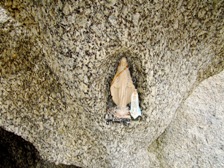 Thanks to Max IAØMZ who has taken a break to walk to the site where the statue of the Virgin is looking at the Italian Mario Zucchelli Station (MZS). We wish some better location for the Mother of Lord, perhaps one day …who knows, someone will turn our dream into a reality and we’ll have a small Chapel at the Italian Scientific site in Antarctica, where to thank God for protecting us.
Thanks to Max IAØMZ who has taken a break to walk to the site where the statue of the Virgin is looking at the Italian Mario Zucchelli Station (MZS). We wish some better location for the Mother of Lord, perhaps one day …who knows, someone will turn our dream into a reality and we’ll have a small Chapel at the Italian Scientific site in Antarctica, where to thank God for protecting us.
Historical Note:
… more than 20 years ado, the Alpini Corp, when the chief of operations in Antarctica was the ex-Colonel (now General Retd)  Mauro Spreafico, made a small altar beneath a rocky outcrop where they put a small statue of the Virgin who had brought from Italy and there, used to meet the Madonna in prayer …. She is always there, for many years now, under a rock.
Mauro Spreafico, made a small altar beneath a rocky outcrop where they put a small statue of the Virgin who had brought from Italy and there, used to meet the Madonna in prayer …. She is always there, for many years now, under a rock.
Pictures show the the Virgin on a hand made cavity at MZS and the Italian Antarctic Base shown from the rocky outcrop where the Virgin stands.
TNX IØJBL & IAØMZ , Merry Christmas
Amsterdam Island – The little chapel “Notre Dame de l’Ocean”
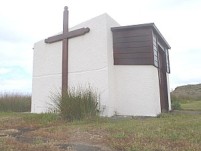 On the TAAF territories administered by the French authorities , freed from any religious affiliation, it is easily surprised to see a chapel present on each Base. This one on Amsterdam Island is tiny but charming, the Virgin Mary stands on her throne on a small altar. It is regularly frequented on Sunday. A few meters away, a bench invites to rest in the wind looking at the sea, and the bench of the chapel is the best observatory based, one could find.
On the TAAF territories administered by the French authorities , freed from any religious affiliation, it is easily surprised to see a chapel present on each Base. This one on Amsterdam Island is tiny but charming, the Virgin Mary stands on her throne on a small altar. It is regularly frequented on Sunday. A few meters away, a bench invites to rest in the wind looking at the sea, and the bench of the chapel is the best observatory based, one could find.
Consecration ceremony of Marambio Base to the Virgin of Lujan
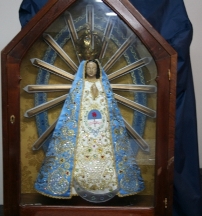 Last Jan. 3rd 2013, with the presence of the priest Marcelo Lopez, and the whole Team of the 44th overwintering campaign,
Last Jan. 3rd 2013, with the presence of the priest Marcelo Lopez, and the whole Team of the 44th overwintering campaign,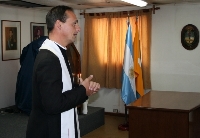
Argentinean Base Marambio-Antarctica Argentina has been consecrated to the Virgin of Lujan; it was a great ceremony that has been reported on the Base diary.
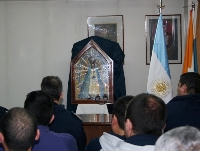
Attendees did pray with eyes and hearts the image of the Virgin of Luján, patron of Argentina, with a commitment
of faith and love.
Source:
Our wishes on all Saints Day

Pray for peace, divine blessings and joy on All Saints’ Day and always; for all those who add happiness to your days… we always keep open our project to build a little Chapel in Antarctica …
WAP Staff
A “Special” Church built at Concordia “Dome C”
|
Daniele Karlicek did visit our web site and our space on Facebook at: |
Antarctic Chapels in philately
 While WAP hasn’t lost the hope, about the project of building a small Chapel at the Italian Mario Zucchelli Station in the settlement of Terra Nova Bay-Antarctica, we are pleased to see that other Countries are honoring their Antarctic sites of cult with polar emission and covers.
While WAP hasn’t lost the hope, about the project of building a small Chapel at the Italian Mario Zucchelli Station in the settlement of Terra Nova Bay-Antarctica, we are pleased to see that other Countries are honoring their Antarctic sites of cult with polar emission and covers.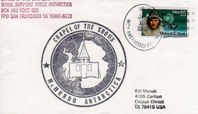
It is the case of USA Chapel of the Snows at McMurdo, already well shown through the page of this dedicate Church in Antarctica’s Section here on WAP website.
This is also a nice oportunity to wish all our readers and supporters a very Happy, Healthy and Prosperous New Year 2011.
Thanks to Francois, F8DVD for sending us this nice envelopes and covers
The Chapel of Base Marambio, Antarctica
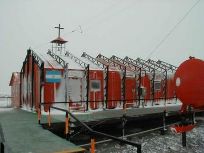 It was the 16th of April 1996 at Marambio Base when his Reverend Excellence the Military Bishop of the Argentine Republic, Monsignor D. Norberto Eugene Martina in solemn Pontifical, came to this Antarctic Station to bless and inaugurate the Oratory of the Cha
It was the 16th of April 1996 at Marambio Base when his Reverend Excellence the Military Bishop of the Argentine Republic, Monsignor D. Norberto Eugene Martina in solemn Pontifical, came to this Antarctic Station to bless and inaugurate the Oratory of the Cha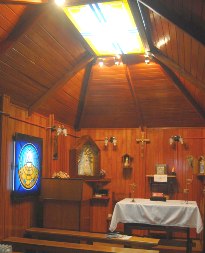 pel dedicated to the Santísima Virgen de Luján.
pel dedicated to the Santísima Virgen de Luján.
This solemn ceremony was presided over by the Air Operations Commander, Brigadier Rubén Mario Montenegro, while Military administrations, civil and special guests did attend the rite as well.
Godfathers of this ceremony were the Head of Argentina Air 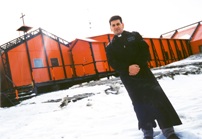 Force’s General staff, General Brigadier Juan Daniel Paulik and his wife Maria del Carmen Luxardo Garcia de Paulik.
Force’s General staff, General Brigadier Juan Daniel Paulik and his wife Maria del Carmen Luxardo Garcia de Paulik.
The Antarctic Chaplain Father Nicholas Daniel Julian (picture here to the left) did participate in the construction and he builds of the oratorical.
More information and photographs, are available at:
http://www.marambio.aq/oratoriomarambio.html 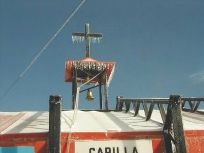
This, is one of the Churches built in Antarctica by the faith of people involved and it’s certainly a good sign to recall Lord and the Virgin in the white desert.
Thanks to you all!
Mail from our readers
by Kathi Kennedy Smith from USA (kathikennedysmith@comcast.net)
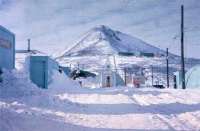 Are their different religions in Antarctica? All of the churches from your site appear to be Catholic. Are there conflicts or cults of any kind established in Antarctica?
Are their different religions in Antarctica? All of the churches from your site appear to be Catholic. Are there conflicts or cults of any kind established in Antarctica?
Here is the answer from WAP:
Hello Kathi,
some Church is multi-confessional, so that is the case of the Chapel of the snow at US McMurdo Base, other are Ortodox as the St. Kliment at the Bulgarian Base or the Russian Ortodox Trinity Church at Bellinghausen Base.
Antarctica is a peaceful place and for sure there are no conflicts of any kind also because it seems ridiculous to fight because of the religion … if I am not wrong, all religions are preacing peace and reciprocal respect!
Regards Gianni I1HYW
..the reply from Mrs.Kathi Kennedy Smith was:
Dear Gianni,
That is so wonderful to hear! I hope to visit some of those beautiful churches one day. Thank you for responding so quickly and for working to keep the peace and the beauty of Antarctica intact. Sincerely, Kathi
…this is another way to love Antarctica!
Support WAP Pproject to build a small church to MZS Station at Terranova Bay!
A possible dream that have difficulty in materializing!
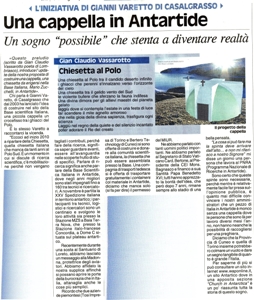 This is the title appeared on one of the oldest and most popular newspaper of the Province of Cuneo, Northen Italy. Corriere di Saluzzo has just published an article about the Chapel in Antarctica, following an initiative launched seven years ago by Gianni Varetto I1HYW (journalist and Ham radio operator), one of the founders of WAP (Worldwide Antarctic Program). The idea of building a chapel in the area of the Italian Research Base Mario Zuchelli Station in Antarctica is still waiting the permission from the Italian Antarctic Dept. (PNRA) even if Pope Benedictus XVI has blessed it during a recent visit at “Madonna della Guardia” Sanctuary in the city of Genova.
This is the title appeared on one of the oldest and most popular newspaper of the Province of Cuneo, Northen Italy. Corriere di Saluzzo has just published an article about the Chapel in Antarctica, following an initiative launched seven years ago by Gianni Varetto I1HYW (journalist and Ham radio operator), one of the founders of WAP (Worldwide Antarctic Program). The idea of building a chapel in the area of the Italian Research Base Mario Zuchelli Station in Antarctica is still waiting the permission from the Italian Antarctic Dept. (PNRA) even if Pope Benedictus XVI has blessed it during a recent visit at “Madonna della Guardia” Sanctuary in the city of Genova.
It
is hard to believe that a little Chapel with a crucifix could be something that have to take years to be approved by the competent authorities, specially if founds are not necessary as donations have already been proposed by the Companies which have propose to donate it.
So Italy, the Country of the Roman empire, the site of the Vatican State, the cradle of the Christianity is so lazy to accept a donation of a little Chapel to be built on the Icy Continent in an area where, several people are spending months away their families without a support of a spiritual place where going for a prayer!
We are keeping this goal as a kind of challenge to achieve, by the Bless of Lord!
Church dedicated to “Notre Dame des Vents” at Kerguelen Island
 “Notre Dame des Vents” is the most southern France Church in the world.
“Notre Dame des Vents” is the most southern France Church in the world.
It hosts some religious services throughout the year on the occasion of major events and is a place of contemplation and meditation for wintering.
Kerguelen, a Sub-Antarctic island of volcanic origin, is located in the South Indian Ocean, approximately 3,300 mi. (5,310 km) southeast of the southern tip of Africa. Also known as Desolation Island, it is the largest of the 300 islands, islets and reefs in the Kerguelen Archipelago, which lie between 48° to 50°S and 68° to 70°E. 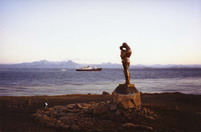
On August 6, 1955, a French law was passed, creating the new autonomous territory of Terres Australes et Antarctiques Françaises (TAAF), which also includes Terre Adélie (Antarctica), Crozet Archipelago, and the tiny islands of Amsterdam/St-Paul and Kerguelen, where during 1956-1957 the TAAF established at Port-aux-Français a geophysical  station for observations in meteorology, geomagnetism, aurora and airglow, ionospheric physics, cosmic rays and seismology. The lone chapel on the island is called “Notre Dame des Vents” and the statue of Notre-Dame is well shown at Mount Ross dominating the ocean down on.
station for observations in meteorology, geomagnetism, aurora and airglow, ionospheric physics, cosmic rays and seismology. The lone chapel on the island is called “Notre Dame des Vents” and the statue of Notre-Dame is well shown at Mount Ross dominating the ocean down on.
There is a Gold Book inside of the Chapel, which tell the visitor the story of its construction. Being a carefully Mother, “Our Lady of the Wind” at Kerguelen, awakes over the waters of the Southern Ocean to protect sealers and personnel at the Base! The stained glass give a beautiful light that invites to stay calm and safe in this place warm and inhabited. The large cross Christ was particularly impressive on his legs folded, it has an unconventional attitude. The good condition of the chapel very well maintained, is remarkable and to it we have to recognize the sensibility of TAAF Management to whom we’ll be alway grateful.
Church in Ice Cave at Belgrano 2 Station, Antarctica.
Uruguayan photographer Amado Becquer Casaballe spent a month on the Almirante Irizar Argentine icebreaker, traveling through the most southern seas of the planet (past the  Polar Antarctic Circle) until the Argentinean Belgrano 2 Base, the
Polar Antarctic Circle) until the Argentinean Belgrano 2 Base, the
country’s permanent scientific base in Antarctica. It’s a trip the icebreaker makes only once a year to change the base’s personnel. During his voyage, Becquer Casaballe lived eternal days, trespassed ice seas, saw white crosses cemeteries that remembered the fallen in the area, and managed to manipulate his camera with huge gloves.
That way, he could photograph the ice desert capturing images that show its peacefulness and beauty, now endangered for the world’s warming. The above shot shows a Church inside an ice cave at the Belgrano 2 base.
As our readers know, WAP is collecting information and pictures to document what important is, for the people in Antarctica, to have a place to pray Lord, an holy place to free one’s spirit and thank Lord for his magnificence.
In the year 2003, WAP did propose to the italian authorities build a little Church at the Italian Base “Mario Zucchelli Station” at Terra Nova Bay… our proposal is still alive waiting the wall of bureaucracy to fall down!
TNX Amado Becquer Casaballe for the pic.
Stella Maris Chapel at Cape Horn Island.
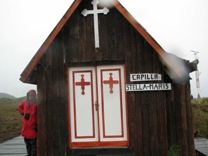 We have already seen several testimonies by the presence of buildings set up in honor and devotion of Lord and Mary the Virgin, in Antarctica and Sub Antarctic Territories.
We have already seen several testimonies by the presence of buildings set up in honor and devotion of Lord and Mary the Virgin, in Antarctica and Sub Antarctic Territories.
A small rustic wooden Chapel Stella Maris “Star of the Seas” belonging to Mar’s Mayoralty of Cape Horn, is another sign of devotion in the Antarctic territories. It
lies near the light keepers house, its doors open for those who wish to
pay their respect to all the seamen who’s lives were lost in these
waters.
It is in fact dedicated to those captains and crews from all over the world, who have made the long journey around Cape 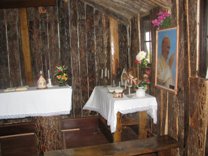 Horn, and who have lost thei
Horn, and who have lost thei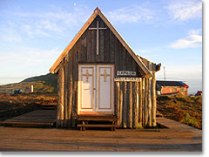 r lives down there.
r lives down there.
Cape Horn is widely considered to be the southernmost tip of South America, on Horn Island, one of Chile’s Wollaston Islands, which are part of the Tierra del Fuego archipelago. The Dutch navigators Jakob Le Maire and Willem Schouten were the first to sail through Cape Horn, in 1616 (died 1625). Schouten named the point “Cape Hoorn” after the town of Hoorn in Holland, where he was born. Cape Horn is located on Isla Hornos, the most southerly of the Hermite Islands.
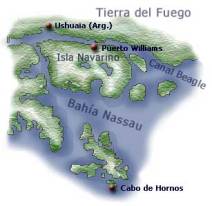 Tierra del Fuego is separated from the South America mainland by the Strait of Magellan.
Tierra del Fuego is separated from the South America mainland by the Strait of Magellan.
Horn Island 55°59′00″ South, 67°16′00″ West, marks the northern boundary of the Drake Passage the strait between South America and Antarctica, it is notorious for its storms and heavy seas.
The cape lies within Chilean territorial waters, and the Chilean Navy maintains an operational station up there.
This
report is part of the huge documentation collected by WAP in support of
the project to build a Chapel at the Italian Base MZS in Antarctica
…God willing!
The Chapel of “Notre Dame des Oiseaux” on Possession Island, Crozet Archipelago (TAAF)
We would like to discover an aspect of the life in a Sub-Antarctic Base, I mean the one connected with Spirituality. 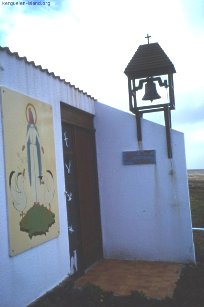 Well we have to assume that, not everybody know that on Possession Island (Crozet Archipelago) French Austral Territories, there is a Chapel called “Notre Dame des Oiseaux” (Our Lady of Birds).
Well we have to assume that, not everybody know that on Possession Island (Crozet Archipelago) French Austral Territories, there is a Chapel called “Notre Dame des Oiseaux” (Our Lady of Birds).
Before talking about this little Church in such a remote place, I would like to use what Father Emmanuel Duche (thanks so much) did report after his visit to TAAF on last July-August 2000, to introduce the subject.
Father Duche wrote: It is certainly the rare privilege to find oneself for a month, the priest of the vastest parish of the world. This privilege was mine as I had the opportunity to accompany the trip of the M/V Marion Dufresne between July 18th and August 16th, 2000. As chaplain of the French Navy, I am doubtless in the habit of visiting the oceans but until now, no mission had driven me so much to the South…. then Father Duche did end his notes with a great consideration: It’s the honor of our Country to
guarantee the freedom of conscience and also to allow a priest to visit
every year these territories at the end of the world where manifestly,
the wind of the Spirit blows in abundance.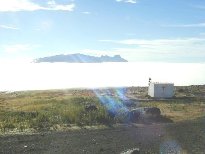
The Chapel of Crozet, is located not too far away Alfred Faure Base. It’s a small sober cubic building, built on the winter season of 1984 in memory of Pierre Frigola, a young researcher tragically perished here, the year before. It was the 1993 when the 31st Mission to Crozet (TNX Jean-Luc Verselin MD) found the Chapel
in poor conditions. Thanks to the ability and generosity of the members
of the mission, little by little they did restore it and its small bell
wooden tower just over the building and made it a real place of prayer.
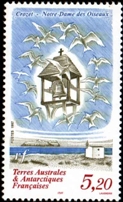 The Chapel now offers itself
The Chapel now offers itself
to the overwintering personnel as a place of silence and peace. A
useful refuge able to reveal and relish the depth advantage of the
experience lived in this archipelago at the end of the world, where the
wind mingles with the Sea and all the birds of the sky.
A nice Philatelic emission of 1997 did show all the Chapels located on Crozet, Kerguelen and Amsterdam Islands of the French Antarctic Territories (TAAF). WAP wish also to praise the French Government and Ecclesiastic Authorities, for taking care of this particular aspect of the life: the Faith.
It is a great honor for WAP to guest histories like this. We are still fighting with the Italian bureaucracy to find out a solution about our proposal to build a little Chapel at the Italian Antarctic Station MZS. Italy, the place where the Roman Church was born, the place where the Pope lives … Italy that have a huge Research Base in Antarctica, does not have a small place to allow a propitious recollection! Our hope will never get lost.
We catch what Father Duche said as a good hope: It
will be the honor of our Country to guarantee at the end of the
world as well, the freedom of conscience and having a little place to
pray, to thank Lord to allow the wind of the Spirit blowing in abundance over the world in a peaceful life. Thanks and credit to:
http://lafrancedesclochers.xooit.com/t88-Clochers-des-Iles-Kerguelen.htm
The bless of Lord over the personnel in Antarctica
|
The bless of Lord over our families. The bless of Lord over the project to build a little Church at Terra Nova Bay! Merry Christmas. |
Chapel of “San Francesco de Asis” at Esperanza Base, Antarctica
|
|
A Catholic Church in Antarctica
|
|
Flat pack Church for Russian workers
|
|
From Diocese of San Jose, Silicon valley, California
Posted by Kimberley Ledwell
 My name is Kim Ledwell and I am the IT Director for the Diocese of San Jose, in Silicon Valley California.
My name is Kim Ledwell and I am the IT Director for the Diocese of San Jose, in Silicon Valley California.
I found your website while I was looking for a Church I could contact
and ask for prayer requests. I see that you are trying to get a
Church built and wanted to see if the efforts have been successful and
if so if the church has a website or e-mail address. Thank you so much, Kim
Here is the reply from WAP side:
HI Kim,
I’m Gianni Varetto I1HYW, the content Manager for WAP (Worldwide Antarctic Program). Thanks for writing and happy you found our proposal to build a Church in Antarctica something interesting for you and for our brothers at the Diocese of San Jose. Your prayer is always welcome.
If you are reading all the spots put on “Church in Antarctica” since the beginning, you can have a full picture of the whole situation. Actually we have:
an Italian Architect who did make the project
an Italian building Company which did offer to build and donate the hardware.
a German shipping Company which did offer to transport the hardware in Antarctica at zero cost.
a young Italian artist who did offer to paint (for free), holy pictures for the Church.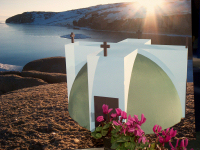
What is still missed is the permission which has to be given by the Italian Antarctic Dept. (PNRA-Programma Nazionale di Ricerche in Antartide), that actually have the responsibility of the Italian Scientific Base at Terra Nova Bay (Antarctica) which is not too far away the US Base of Mc Murdo.
We did involve several politics, the Vatican State, the Pope Benedict XVI, and the Secretary of Vatican State Card. Tarcisio Bertone as well as the President of CEI Card. Angelo Bagnasco, but unfortunately so far we have got nothing back.
We are still hoping that the bless of Lord
will help the burocraters to take a decision and of course any help
from anyone WW will be greatly appreciated. Thanks again.
With best regards
Gianni Varetto I1HYW
Project of the WAP Church for Antarctica
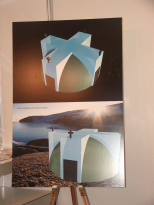 Shown at MARC-2008, Genova, Italy
Shown at MARC-2008, Genova, Italy
Last May 17 & 18, WAP was present at the MARC Fair Exhibition in the City of Genova and there, we did show the project  for a Church to be built down in Antarctica in the area of the Italian Scientific Base.
for a Church to be built down in Antarctica in the area of the Italian Scientific Base.
Next week a group of pilgrims will go to Rome to meet Pope Benedict XVI. They will bring His Holyness a letter with the up date of the situation, which actually, seems to be blocked into some bureaucracy !
Hope Pope Benedict XVI will bless our initiative and the blessing can help to break the bureaucracy wall!
BIO-TECHNOLOGY and our CHURCH in Antarctica
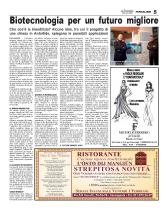 The use of bio-technology is more a modern need rather than a nowadays fashion. The project of building a New Church in Antarctica is a proposal launched by WAP back in the year 2003, which unfortunately has not been approved yet by the Italian National Antarctic Dept. called PNRA.
The use of bio-technology is more a modern need rather than a nowadays fashion. The project of building a New Church in Antarctica is a proposal launched by WAP back in the year 2003, which unfortunately has not been approved yet by the Italian National Antarctic Dept. called PNRA.
On a local Italian Newspaper (la Pancalera www.lapancalera.it ) in its February 2008 issue, there is an interesting article explaining about the characteristic of this kind of bio-building material, well explained by Ing. Sebastiano Bertero, the man who will donate the building to the Italian Base MZS in Antarctica as soon as the PNRA will accept this donation. The Church will be fully built according to the bio-building techniques.
Help us to do it…. It is not an easy task but I’m sure we will accomplish it!
A Church in the icy Continent
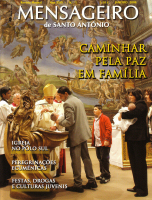
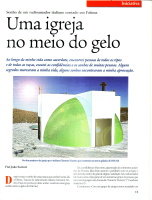
Father João Sartori is a priest that lives in Coimbra, Portugal. I met him last April 2007 at Fatima during a pilgrimage and we did talk about the project of build a Church in Antarctica.
He is one of editor of the Famous Magazine called “Messenger of San Antonio” ; he did share the initiative and written a great article about it.
Thanks though to Father João Sartori, the “Mensageiro de Santo Antonio” did publish in its January 2008 issue, 3 pages about the project of build a Church in Antarctica at the Italian base Mario Zucchelli.![]()
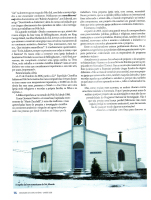
Father João, said the “Mensageiro de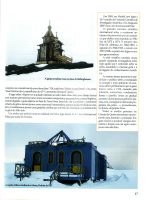 Santo Antonio”
Santo Antonio”
is published in 10 different languages, let’s hope it will be retaken
in other Countries and let’s hope the dream comes trough the bureaucracy
and became one day a reality!
On page 15, 16 and 17 of the magazine also are the pictures of the Chapel of the snows at McMurdo, the Trinity Church at Bellinghausen and Capilla Reina de la Paz at the Chilean base Presidente Frei.
Thanks to Father João .
Help us to reach the goal, stay with us and follow our dream!
Mc MURDO BASE, ANTARCTICA

The Chapel of the Snows and its history.
Part 2
To replace the chapel, volunteers converted a Quonset hut near the station’s main building. While they worked to complete this temporary
chapel, the Chalet served as the site for the community’s religious services. However, this building, which normally houses NSF and contractor offices, could not accommodate both Sunday morning services and daily administrative activities during the summer season. On Easter Sunday 1979, the temporary chapel was dedicated.
The current chapel was constructed over four summers and completed in 1989. Volunteers using salvaged material built the only know house of worship in Antarctica.
 The McMurdo Station Chapel of the Snows sits on a knoll overlooking McMurdo Sound, the peaks and glaciers of the Transantarctic Mountains, across the bay from Mount Discovery. It is the world’s southernmost building constructed for religious services.
The McMurdo Station Chapel of the Snows sits on a knoll overlooking McMurdo Sound, the peaks and glaciers of the Transantarctic Mountains, across the bay from Mount Discovery. It is the world’s southernmost building constructed for religious services.
From the March, 1989 Antarctic Journal..
New Chapel of the Snows dedicated at McMurdo Base
McMurdo Station once again has a permanent place of worship.
To commemorate this occasion, approximately 80 people gathered on Sunday, 29 January 1989 to dedicate the new Chapel of the Snows, which is the third chapel to be raised at the station. Just 840 miles from the South Pole, the Chapel of the Snows is the world’s southernmost building erected primarily for religious services. It also is the only known house of worship in Antarctica.
Situated on a knoll overlooking McMurdo Sound and the peaks and glaciers of the Transantarctic Mountains, the new chapel replaces the temporary building, a makeshift hut, that has been used for religious services and related activities for 11 years.
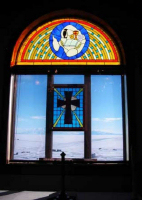 Picture on the left
Picture on the left
Stained glass window inside the Chapel of the Snows. The window overlooks McMurdo Sound. The Transantarctic Mountain Range can be seen in the distance on a clear day.
Dedication ceremony
The hour-long dedication ceremony attracted an overflow crowd from McMurdo Station and Scott Base, the nearby research station operated by New Zealand. The service included piano music, hymns, and readings from the Bible.
Lt. M. Brad Yorton, chaplain of the U.S. Navy’s Naval Support Force Antarctica, whose support includes religious services at the station, presided. Also participating in the ceremony were Ronald R. La Count, the senior U. S. representative in Antarctica at the time of the dedication; Captain Dwight Fisher and Commander John V. Smith, the commanding officers of the Naval Support Force Antarctica (NSFA) and the Antarctic Development Squadron Six (VXE-6); Neal Terry, personnel coordinator for ITT/ Antarctic Services, Inc, (NSF’s support contractor); and guest speaker Father Gerard Creagh from Hoon Hay Parish in Christchurch, New Zealand.
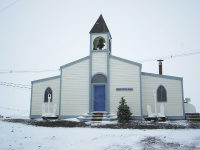 Mr. La Count described for the group the construction of the new chapel and recalled how volunteers had erected the station’s earlier Chapels
Mr. La Count described for the group the construction of the new chapel and recalled how volunteers had erected the station’s earlier Chapels
in their space time. He also cited official reports that documented over the years the significance of worship for those at the station, whose work took them far from their families and their home communities.
This service marked the second time that Father Creagh had participated in a ceremony to dedicate a site for religious services at McMurdo Station, as he was the invited speaker in 1979 when the community gathered for a similar service recognizing the makeshift chapel that has been replaced by the new structure.
In his address he praised those who built the chapel in just 4 months. “The result is truly deserving of the accolade found in the twenty-first chapter of the Book of Revelation: This is God’s dwelling among people.
Continuing, he noted that “Another chapter in the history of a unique operation is about to begin-a unique operation in peaceful cooperation and coexistence on the only continent that has no weapons, has known no class struggles or wars, and from which nuclear explosions and waste are banned by treaty.”
Although the original chapel and the temporary building were built entirely by volunteers, the new building was constructed as part of the National
Science Foundation’s plan to refurbish the McMurdo Station.
The 2,016-square-foot wood structure contains office space, a central worship area that normally seats 63, and McMurdo’s only organ.
Materials to complete the building were salvaged from older structures that were ripped down during the several-year rebuilding of the station.
Thanks and credit to the following web sites and to the writers of this articles from which we did take part of this notes.
http://www.geocities.com/~kcdreher/chapel.html
http://www.zondra.org/
http://www.southpolestation.com/trivia/history/chapel.html
Mc MURDO BASE – ANTARCTICA

The Chapel of the Snows and its history – Part 1- .
Antarctica’s first church in this site, was built in 1956 by volunteers using surplus materials. This building was destroyed by fire in 1978. The only things rescued were the chapel bell, two stained glass windows, and various small religious items. In 1979 a Quonset hut was remodelled to serve as chapel, and the building was dedicated in December. By 1982 another Chapel of the Snows had been built close to the original site (again with volunteer labour using salvaged material).
 Earlier chapels
Earlier chapels
The
Chapel of the Snows had not appeared in the 1956 plans for McMurdo
Station. Religious services were to be held in the mess hall. In
preparation for Antarctic research to be conducted during the International Geophysical Year (1957-1958), U.S. Naval Construction Battalion personnel (Seabees) began building McMurdo Station during the 1955-1956 austral summer.
The
original plans for the station did not include a chapel; instead,
religious services were to be held in the station mess hall. However,
according to Admiral George Dufek, who commanded Deep Freeze I, “As
the construction of the buildings at McMurdo progressed a mysterious
pile of lumber, planks, nails, Quonset hut sections, and assorted
materials began to accumulate on a knoll overlooking the camp.”
The Chaplain, Father John C. Condit, and volunteers from the construction battalion gradually gathered enough materials to build what was to become the first Church ever erected in Antarctica. All of the work was done by volunteers after their daily duties were finished.
Admiral Dufek noted: “The
men, after a hard day’s work, would drift over to the church site.
Before the main camp was finished a tidy neat church with a steeple was
to stand on a ridge overlooking the camp. Later it even had a bell,
procured from a small gasoline tanker.”
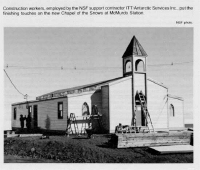 When the Chapel of the Snows was
When the Chapel of the Snows was
completed, Father Condit had the world’s most southern parish. For 22
years this simple building provided a place of worship for personnel not
only at McMurdo Station but also from nearby Scott Base.
Two
excellent Antarctic Journal articles document the history of this
structure, and its replacement after the 1978 fire that destroyed it… (From the December, 1978 issue…
Chapel of the Snows destroyed).
On 22 August 1978, a
fire, believed to have begun in one of the buildings heaters, broke
out. The fire began in the rear heater room of the building about 5 a.m.
The fire crew fought the blaze successfully in the interior of the
chapel, but a sudden flare-up indicated that the fire had spread between
the interior and exterior shells along the top of the building. The
crew moved outside, but despite their efforts, fire soon engulfed the
structure, the flames covered the entire chapel.
Fearing
that the fire would spread to the adjacent structure, Building 108, or
destroy the communications cables strung between poles near the front of
the chapel, the crew brought a bulldozer to the building and pushed in
its front. With the bulldozer, they isolated sections that were still
burning and dumped snow on them to keep sparks from flying in the
breeze.
By 7:40 a.m.
the fire was under control but the chapel was destroyed. When the roof
of Building 108, adjacent to the chapel, began to smoulder, volunteers
shovelled snow onto the roof and sides of the building to protect it
from damage. A front-end loader finally knocked down the rest of the
chapel and pushed the rubble away from the cables and Building 108.
Only
a few religious objects , all damaged, along with the chapel bell were
recovered from the rubble, otherwise the building and all its contents,
including historic memorabilia from Deep Freeze One and subsequent
winter crews, were a total loss.
Thanks and credit to the following web sites and to the writers of this articles from which we did take part of this notes.
http://www.geocities.com/~kcdreher/chapel.html
http://www.zondra.org/
http://www.southpolestation.com/trivia/history/chapel.html
Going on, through the long and hard way, with the Bless of Lord!
 Our project for a Church in Antarctica is shown at the famous “Restructura Exhibition” , held till Dec. 2nd 2007, at the large “Lingotto Fiere Hall” in the city of Turin, Italy.
Our project for a Church in Antarctica is shown at the famous “Restructura Exhibition” , held till Dec. 2nd 2007, at the large “Lingotto Fiere Hall” in the city of Turin, Italy.
Biotechnology and Bio-building materials are shown on a large scale in this yearly exhibition and among that, there was our sponsors: the Companies who did chose to build and donate a Church in Antarctica to be assembled at the Italian Base Mario Zucchelli Station.
Saint Gobain & Bertero Technology, represented by Tosimpresa did carry on the challenge. The project of our Church was officially exhibited at their show room in Torino.
Picture show Sebastiano Bertero at the Show room with  the poster of the church, which will be first one ever built in Antarctica, by the use of bio-building materials.
the poster of the church, which will be first one ever built in Antarctica, by the use of bio-building materials.
Actually,
this is still a dream as, written permission have not yet been
granted. Picture at right, show a bit detail of this Bio-building
material made by full natural fibers particularly set &
assembled and than covered with a tickness of special concrete. Torino Polytechnic University did recently performed some tests to prove the huge resistance and life reliability of such innovative tecniques.
With the bless of Lord, we hope and are confident to accomplish this mission …!
Bulgarian Church at St. Kliment Ohridski Station

St. Kliment Ohridski Base is a Bulgarian Antarctic scientific Base on Livingston Island in the South Shetlands Islands group. The base, originally known as Sofia University Refuge, was named in 1993 after Cement of Ohrid, a prominent scholar and first Bulgarian bishop, whose work was commissioned and sponsored by Tsar Boris Ist of Bulgaria.
An expansion program at St. Kliment Ohridski including the erection of a new multi-purpose building was carried out between and subsequently.
Just to complete the description of the Churches in Antarctica , it is great to know that on this Bulgarian Base there is one of the first churches ever built in Antarctica, and this gives honour to the  Bulgarians for having no only thought about scientific matters, but to something more important ….. that’s Lord!
Bulgarians for having no only thought about scientific matters, but to something more important ….. that’s Lord!
The St. John of Rila Chapel at Bulgarian St. Kliment Ohridski Base is an Eastern Orthodox chapel located further South. The St. Ivan Rilski Chapel built in 2003 is the first Eastern Orthodox edifice in Antarctica and the southernmost Eastern Orthodox building of worship in the world.
Whalers’ Church (South Georgia Islands)
We are continuing our virtual visit to the Churches located far South, in Antarctic regions. Today, weare stopping by at:

Located at Grytviken, by the British Antarctic Base “King Edward Point”, on Sub Antarctic South Georgia Islands.
Grytwiken, was an old whaling site and port. In several whaling ports, there was a building dedicated as a Whalers’ Church. This one, however is a typical Norwegian church and is the only building at Grytviken that retains its original function. A box with candles show that services are still being held here every now and then.
Inside there are memorials to Carl Anton Larsen and Sir Ernest Shackleton, whose funeral was held here. There are also two bells, which visitors are invited to ring.
Still in use, the Church was pre-fabricated in Norway and shipped to Grytviken for assembly. The Church was consecrated on Christmas Day 1913.
The
church’s wooden structure has deteriorated over the years, and storm
damage to the roof in 1994 prompted a major program of restoration,
which is now complete and the Church did reach its original
characteristic.
The first pastor of the Whaler’s Church at Grytviken, was Kristen Loken and the position has remained vacant since 1931.
Kristen
Lóken, had to admit that “religious life among the whalers left much to
be desired”. The church has been used for a few baptisms and marriages.
The first baptism was on Christmas Day 1913, and 13 births have been
registered on South Georgia. There have also been four marriages – the
most recent in 1999 – but the church has been used more often for
funerals. Twelve men died in 1912 of typhus brought by ship.
 The church cemetery contains many empty graves for sailors who perished at sea.
The church cemetery contains many empty graves for sailors who perished at sea.
The
recently restorated whaler’s church can be reached by walking from the
cemetery, towards Grytviken, via a muddy path and over the former
whaler’s soccer field. Walking between the old buildings is not allowed
anymore.
WAP
did launch in the 2003 a project to build a Catholic Church in
Antarctica on the Italian Base Mario Zucchelli Station. This is still
our challenge.
Stay with us and share with us the initiative!
Trinity Church, Antarctica
From: Wikipedia, the free encyclopedia
http://en.wikipedia.org/wiki/Trinity_Church,_Antarctica
 Trinity Church is a small Russian Orthodox church on the King George Island near Russian Bellinghausen Station in Antarctica. It is the southernmost Eastern Orthodox church in the world.
Trinity Church is a small Russian Orthodox church on the King George Island near Russian Bellinghausen Station in Antarctica. It is the southernmost Eastern Orthodox church in the world.
The ambitious project to establish a permanent church or even a monastery on Antarctica surfaced during the 1990s. A charity named Temple for Antarctica was approved by Patriarch Alexius II and received donations from across Russia. They organized a competition for the project that was won by architects from Barnaul P.I. Anisifirov, S.G. Rybak and A.B. Schmidt.
The
church is a 15m-high wooden structure built in traditional Russian
style. It can accommodate up to 30 worshippers. The structure was built
out of Siberian Pine by Altay carpenters led by K.V. Khromov, then dismantled, shipped to Antarctica (by the ship Academician Vavilov) and assembled there by the staff of Bellinghausen Station.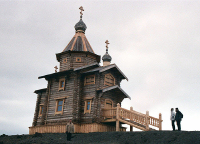
The iconostasis was created by Palekh painters. The church bells were paid for by the descendants of Sergey Muravyov-Apostol.
The church was opened on May 29, 2004, the Pentecost or Trinity day according to the calendar of the Russian Orthodox Church. The church was blessed by Hieromonk Kallistrat (Romanenko), head priest of Troitse-Sergiyeva Lavra, who visited Antarctica for this occasion. The permanent priest of the church is Father Georgy, who has twenty years of polar experience and now lives permanently near his church.
Among his tasks is praying for the souls of 64 Russian people who died in Antarctic  expeditions and serving as the spiritual needs of the staff of Bellinghausen Station and other nearby stations.
expeditions and serving as the spiritual needs of the staff of Bellinghausen Station and other nearby stations.
Notes and references
World Wide Antarctic Program. A Catholic Church in Antarctica … a Challenge from WAP, 29 January 2006. Visited 15 April 2006.
2. The St. John of Rila Chapel at Bulgarian St. Kliment Ohridski Base is an Eastern
Orthodox chapel located further south and the Chapel of Snow at United States McMurdo Station is the southernmost religious building in the world. Whether a chapel is a type of church depends on the definition.
Other related links:
http://r-oc.1gb.ru/viewpage.php?cat=antarctic_continent&page=1
http://community.livejournal.com/ru_woodarch/82379.html?
In the year 2003, WAP did launch the iniative to build a Catholic Church at the Italian Base “Mario Zucchelli” located at Terra Nova Bay in Antarctica.
I’m sure we will (the Russians did it very well) accomplish our mission and we’re sure, one day our Church will be on down there as well!
Catholic Church at Chilean Base P.te Eduardo Frei
Catholic Church at Chilean Base P.te Eduardo Frei
(62°12’ South, 58°57’51” West)
 Chapel of “Santa Maria Reina de la Paz” stands at Villa las Estrellas, the most populated town of the South Shetlands , in the area where, the houses of personnel’s families are located, among the settlements of Eduardo Frei Base. Actually there are eight families with children living there; they are Regular Officers of Chilean Air Force, including the Chief of the base, Air Traffic Controllers of T.Te Rodolfo Marsh airport. These personnel and their families have two years engagement, and live at Villa las Estrellas.
Chapel of “Santa Maria Reina de la Paz” stands at Villa las Estrellas, the most populated town of the South Shetlands , in the area where, the houses of personnel’s families are located, among the settlements of Eduardo Frei Base. Actually there are eight families with children living there; they are Regular Officers of Chilean Air Force, including the Chief of the base, Air Traffic Controllers of T.Te Rodolfo Marsh airport. These personnel and their families have two years engagement, and live at Villa las Estrellas.
The town, has also a school, an hospital , a Post Office and a bank.
The Chapel, is made by a large metallic container, with electricity, heating system, voice amplifier and inside, there are 12 pews which can locate 36 seated people.
Religious ceremonies are officiated from a Deacon who lives at the Base, and by priests, who are eventually travelling around.
TNX Ricardo Verlasquez CE3HDI
When a Catholic one … at the Italian Base MZS, Terra Nova Bay?
20/8/2007
Following our virtual Antarctic Exploration , in finding signs of devotion and faith, we are  today stopping by the:
today stopping by the:
Vince’s Cross and “Our Lady of the Snows” Shrine.
Immediately above Scott’s Hut on a small knoll overlooking the bay is Vince’s Cross, a wooden cross erected in 1902 to commemorate Seaman George T. Vince, the first man to lose his life in McMurdo Sound, following a fall into the water from a steep, icy slope nearby during a blizzard. 
Also above the hut is the Our Lady of the Snows Shrine, a Madonna statue that commemorates Richard T. Williams,
a Seabee tractor driver who drowned off Cape Royds near Ross Island, in
January 1956 when his D-8 Caterpillar (30- tons tractor) broke through
the sea ice. Near this shrine is a monument erected to commemorate Raymond T. Smith, a Navy petty officer killed during a ship unloading accident at McMurdo in February, 1982.
Pics by Alan Miller @ http://www.polartrec.com/node/228
TNX Alan Miller
28/07/2007
 Last June 26-2007 , Cuneocronaca (www.cuneocronaca.it), one of the important on-line newspaper from the North Western part of Italy, did report an interesting article about the Church in Antarctica. This is still our challenge and everybody can share this initiative with us.
Last June 26-2007 , Cuneocronaca (www.cuneocronaca.it), one of the important on-line newspaper from the North Western part of Italy, did report an interesting article about the Church in Antarctica. This is still our challenge and everybody can share this initiative with us.
Two companies from Cuneo (Italy) BERTERO TECHNOLOGY & SAINT GOBAIN did offer to build and donate the church.
Capt. Kai G. Lehmann , on behalf of a German Company ANTARTIDA Polarreisen GmbH, Friedrich-Ebert-Strasse 59,
D-38440 Wolfsburg, Germany, did offer to donate transport facilities of the material, by air or ship to Antarctica.
A young italian artist Francesca Fogliacco did offer to paint the walls of the church for free.To read the article check:
http://www.cuneocronaca.it/news.asp?id=1360&typenews=primapagina
What is still missed to accomplish our mission, is the permission from PNRA (Italian Antarctic Dept)! To support our goal, you can write a letter or a mail, addressed to:
Ing. ANTONINO CUCINOTTA, Direzione Generale ENEA CR Casaccia
PNRA ANTAR-SCI, Via Anguillarese, 301
00060 S.Maria di Galeria (RM) e-mail direzione@consorzio.pnra.it
Or to: Segreteria di Stato Vaticano
Palazzo Apostolico Vaticano,
Città del Vaticano 00120, Vatican State
and or to: Osservatore Romano , Vatican newspaper : ornet@ossrom.va
Radio Vaticana, Piazza Pia 3, 00120 Città del Vaticano
Vatican State sedoc@vatiradio.va
WAP, and you will join us with this dream!
Things are getting slowly ahead

 Our Church in Antarctica and its connected activities, are getting ahead even slowly.
Our Church in Antarctica and its connected activities, are getting ahead even slowly.
Mons. Marco Bagnara from La Guardia’s Sactuary has written another chapter of this story on la Guardia Bulletin of March 2007.
Our Church in Antarctica should be built at the Italian Base MZS and it will be dedicated to the Virgin of La Guardia , who have already over 300 Sanctuaries in the world. Our Church in Antarctica is a proposal arising in the year 2003 and WAP is trying to do his best to enlarge the share of this initiative.
Our Church in Antarctica is a proposal arising in the year 2003 and WAP is trying to do his best to enlarge the share of this initiative.
Stay with us, we love Antarctica, the
studies and researches , the peace and the hard job done by personnel ….
but we also wish to remind that, such a treasure, is given us by LORD.
It will be emotioning to se a little church over there in a place so
remote and insulated which belongs as well to the creation of God;
that’s why we strongly believe that a Church over there is the best touch of our love to Him.
WAP non only science … not only Hams or QSLs!
TNX IZ1GJK, Maurizio Gentile
Our Church in Antarctica, a great offer by “Antarctica Polarreisen GmbH”
 Another step on the long way to build our Church in Antarctica
Another step on the long way to build our Church in Antarctica
I’m happy to share the following information with all our supporters.
Capt. Kai G. Lehmann from ANTARTIDA Polarreisen GmbH has just written us:
Capt.Kai wrote:
dear Gianni,
If you want to build your church in Antarctica, we would be glad to offer transport facility by plane or ship.
I
will donate transport facilities by air or ship. You can se from our
web site, what we are doing. Whenever you are ready you just let me know
with best regards ,
,
Capt. Kai G. Lehmann
Friedrich-Ebert-Strasse 59
D-38440 Wolfsburg
Tel. +49 5361 8480688
mobile. +49 174 5158447
Just pay a visit to http://www.antartida.de and you will discover more !
Thanks immensely to Capt. Kai for such a GREAT offer!
The idea and project to build a Church in Antarctica did start in the year 2003 after having seen that just 4 bases down there have their own Church for personnel and researchers:
1. US Mc Murdo Base
2. Chilean P.te Frei Base
3. Russian Bellinghausen base
4. Bulgarian St. Klimend Ohridski Base.
Italian
base Mario Zucchelli Station which locates about 120-160 people does
not have nothing to feed spiritual needs of its personnel.
I did start to involve authorities, politics, media (newspapers and TV) and of course the PNRA (the National Antarctic Research Program, which is the authority having responsibility and jurisdiction on the Italian installations and research programs in Antarctica), to sensitize the pubblic opinion and the institutions about this matter.
Bureaucracy is a huge problem, particularly in Italy and of course, we are still working in trying to convince PNRA to give the authorization.
Also we have involved the Vatican through the official channels such as The Secretary of State Vatican (Mons. Tarcisio Bertone) and CEI Italian Episcopal Conference (Mons. Angelo Bagnasco).
After my last national TV interview, I have been called by Italian Companies who have offered to build and donate the church.
In fact, 2 Companies in Italy did offer to build the Church in Antarctica.
They are: Saint Gobain and Bertero Technologies located in the city of Cuneo in the North West part of Italy.
They have developed bio-materials for building industry and both
Companies did offer to join together in building and pack the Church in a
container ready to be shipped to Terra Nova bay in Antarctica where the Italian base is located.
Unfortunately every thing is actually still pending as permission is not been given yet!
A little piece of history …

As the readers know, WAP is trying since 2003 to get the permission to donate and build a little Church in Antarctica at the Italian base MZS.
It’s a spiritual need for the personnel at the Base, but also a tuch of glory and devotion to Lord.
The story of the Italian Base in Antartica his well recalled by Prof. Luciano Blasi (Amateur Radio operator IØJBL) one of the first Italians in Antarctica following of Italian scientific Missions since 1986.
Luciano did tell me that at Terra Nova Bay, there is a “Madonnina” inserted in the cliff, a gesture of faith and celestial respect, that it deserves of being known.
Luciano did say to me that:
…… the Alpines, when the head of the operations was the former-colonel (now retired General) Mauro Spreafico, did make a small altar under a full of rocks spur where a little statue of the Virgin (Madonnina in Italian language) have been located, so that people from the Base was usual to gather in prayer in front of Her.
Others have told me that the Madonnina is still there and nobody has never touched it.
I knew then, from Mrs. Rita Bartolomei (that was responsible of the communication at Dome C Base, but for years has worked to BTN/MZS) that on Sunday, in the only space of rest, there have been organized groups of prayer where, who wanted, could join and do it.
I did catch up Rita Bartolomei via email in December 2004,and she had written to me that as far as the Madonnina inserted in the cliff to BTN/MZS concern, she can confirms that it is still there.
 The Lieut. Col. Angelo Romito Meteorologist from the IAF, just returned from XXII the Italian Expedition to Terra Nova Bay-MZS, did send me a photograph of that full of rocks spur, where the alpines built a niche and its small altar .
The Lieut. Col. Angelo Romito Meteorologist from the IAF, just returned from XXII the Italian Expedition to Terra Nova Bay-MZS, did send me a photograph of that full of rocks spur, where the alpines built a niche and its small altar .
They are happy that the Madonnina is
still there, and are sure that in such a cold and dispersed place, She
will pour out moments of serenity to whom, there at the Base, it has
need. In the year 2003 we have begun this sort of campaign to sensitize
the people about to our idea to construct a church over there in Antarctica.
The way is still long to go because moving bureaucracies is not an easy
way. We are sure that with the aid of the providence we will succeed in
achieving this great dream.
Help us to materialize a dream, that’s what we are looking for.
![]()
Building a Catholic Chapel in Antarctica
… still our top Challenge

Chasers and readers should be aware that since 2003, WAP has launched the idea of building a Catholic Chapel in Antarctica at Italian Base Mario Zucchelli on Terra Nova Bay , under the motto:
A Catholic Church in Antarctica … a Challenge from WAP.
Several magazines and newspapers have already published articles and picture about it and this let us hoping well.
On the WAP web site www.waponline.it , there is a special dedicated section , called “Church in Antarctica” where coming to read about what has been already done on this specific field in Antarctica.
We are working in several direction, and we are involving Institutions (and not only….) which have granted us their help in order to perform the ever best goal down there in the ice where, in spite of what is commonly thought … someone is living there!
WAP, our passion lives here! Stay with us…. and enjoy it

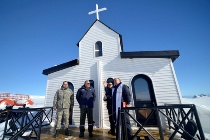 On Thursday 25 September 2014, the Commander in Chief of the IV Air Brigade, General Aviation Brigade Manuel Sainz Salas, did visit the Antarctic Air Base President Eduardo Frei Montalva and attended, with the Commander of the Air Base Group Commander (DA) Gonzalo Opazo, t
On Thursday 25 September 2014, the Commander in Chief of the IV Air Brigade, General Aviation Brigade Manuel Sainz Salas, did visit the Antarctic Air Base President Eduardo Frei Montalva and attended, with the Commander of the Air Base Group Commander (DA) Gonzalo Opazo, t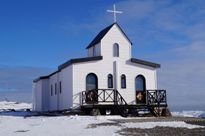 o the reopening ceremony of the Chapel of Santa Maria Reina de la Paz located at Villa Las Estrellas, the largest Chilean town in Antarctica. The Chaplain of the Unity Group Commander (SR) Juan Fuentes, blessed the new premises.
o the reopening ceremony of the Chapel of Santa Maria Reina de la Paz located at Villa Las Estrellas, the largest Chilean town in Antarctica. The Chaplain of the Unity Group Commander (SR) Juan Fuentes, blessed the new premises. There’s a saying about there being no God in Antarctica but from this summer there will also be fewer priests. America’s National Science Foundation has told Christchurch’s Catholic Diocese in NZ it no longer needs local priests on the ice. It was a sad development, but inevitable, says Father Dan Doyle (pic aside), who had been to Antarctica himself 14 times since 1984, and it was an amazing experience for the clergy.
There’s a saying about there being no God in Antarctica but from this summer there will also be fewer priests. America’s National Science Foundation has told Christchurch’s Catholic Diocese in NZ it no longer needs local priests on the ice. It was a sad development, but inevitable, says Father Dan Doyle (pic aside), who had been to Antarctica himself 14 times since 1984, and it was an amazing experience for the clergy.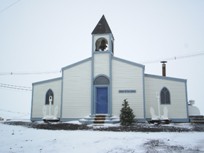 Better communications and internet connections meant people were less isolated while working in Antarctica and the drop-off was noticeable in the past five or six years. When I first went there 30 years ago there was no outside contact except ham radio or a two-minute phone call every few months, Father Doyle said
Better communications and internet connections meant people were less isolated while working in Antarctica and the drop-off was noticeable in the past five or six years. When I first went there 30 years ago there was no outside contact except ham radio or a two-minute phone call every few months, Father Doyle said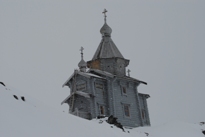 Our website and in particular this page dedicated to the Churches in Antarctica is now home of a very special reportage from a very special guest, the Mayor of Uvarovo City, Tambov Oblast, Russia.
Our website and in particular this page dedicated to the Churches in Antarctica is now home of a very special reportage from a very special guest, the Mayor of Uvarovo City, Tambov Oblast, Russia.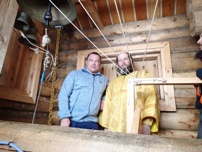 e WAP pages. As the mayor of this City, Alexander Kuznetsov did bring with him, on his way to Antarctica, the Tambov “Mother of God” and “St. Pitirim” icons to be presented to the Holy Trinity Church, the only Russian Orthodox Church in Antarctica.
e WAP pages. As the mayor of this City, Alexander Kuznetsov did bring with him, on his way to Antarctica, the Tambov “Mother of God” and “St. Pitirim” icons to be presented to the Holy Trinity Church, the only Russian Orthodox Church in Antarctica.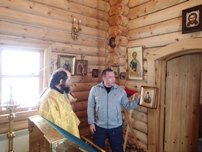 I have got a very great impression of the form of the temple and the conversation with the priest I had. We climbed up a small hill on which stands the temple, in a deep snow, and it was not easy. While the Church bells were ringing. It was very symbolic that we, overcoming the hard way, were in front to this miracle. The “Rector” invited us to the bell tower and allowed supervised also ring the bell.
I have got a very great impression of the form of the temple and the conversation with the priest I had. We climbed up a small hill on which stands the temple, in a deep snow, and it was not easy. While the Church bells were ringing. It was very symbolic that we, overcoming the hard way, were in front to this miracle. The “Rector” invited us to the bell tower and allowed supervised also ring the bell.
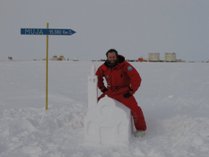
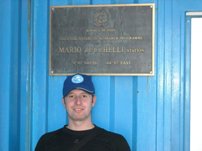 every day, aerosol atmospheric samplings, snow and precipitations, observing and record data weather.
every day, aerosol atmospheric samplings, snow and precipitations, observing and record data weather.

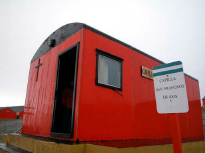 Continuing our virtual tour of the Antarctic Bases, speaded alla round the Icy Continent, we stop today at Esperanza Base, a nice Argentinean Station at Hope Bay. Thanks to Mr. Peter Sinke, a german friend who did sent this interesting pictures of a Chapel locater right here at 63° 32′ 42” South, 56° 59′ 46” West.
Continuing our virtual tour of the Antarctic Bases, speaded alla round the Icy Continent, we stop today at Esperanza Base, a nice Argentinean Station at Hope Bay. Thanks to Mr. Peter Sinke, a german friend who did sent this interesting pictures of a Chapel locater right here at 63° 32′ 42” South, 56° 59′ 46” West. 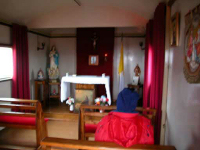
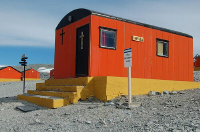 The Post Office sells stamps, and mail sent from here will reach any parts of the world in a relatively short time. When walking on the gravel roads through the base, one feels like to be really in a small town. The base has also a little Museum, an infirmary, 13 housing buildings, and a graveyard. The Chapel shown in the pictures is the one at Esperanza Base, and it is dedicated to San Francesco de Asis. It may not be the smallest chapel in the world but must be one of the most remote, and for sure it is the most Sothern one dedicated to S. Francesco. TNX Peter Sinke
The Post Office sells stamps, and mail sent from here will reach any parts of the world in a relatively short time. When walking on the gravel roads through the base, one feels like to be really in a small town. The base has also a little Museum, an infirmary, 13 housing buildings, and a graveyard. The Chapel shown in the pictures is the one at Esperanza Base, and it is dedicated to San Francesco de Asis. It may not be the smallest chapel in the world but must be one of the most remote, and for sure it is the most Sothern one dedicated to S. Francesco. TNX Peter Sinke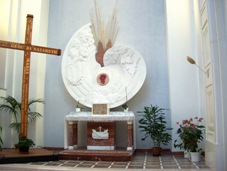 It was 5 years ago when WAP did launch the idea to build a Catholic Church in the area of the Italian Base MZS, at Terra Nova Bay, Antarctica.
It was 5 years ago when WAP did launch the idea to build a Catholic Church in the area of the Italian Base MZS, at Terra Nova Bay, Antarctica.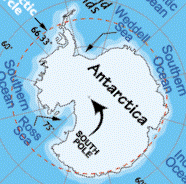
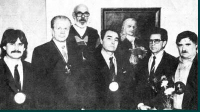 So the Patriarch proposed to build a Russian orthodox church at one of the Russian Antarctic stations. This choice was in full conformity with the Russian historical traditions. The place for construction of the church was selected at Bellingshausen station on King George Island. The Creative workshop of the Architect Anisiforov (First Left at the B&W pic on the R) designed the church. A group of Siberian architects won a national competition to design the church. They built it out of Altay cedar wood, which is considered a precious material, and incorporated 30 types of timber into it – a feature of old Russian churches.
So the Patriarch proposed to build a Russian orthodox church at one of the Russian Antarctic stations. This choice was in full conformity with the Russian historical traditions. The place for construction of the church was selected at Bellingshausen station on King George Island. The Creative workshop of the Architect Anisiforov (First Left at the B&W pic on the R) designed the church. A group of Siberian architects won a national competition to design the church. They built it out of Altay cedar wood, which is considered a precious material, and incorporated 30 types of timber into it – a feature of old Russian churches.